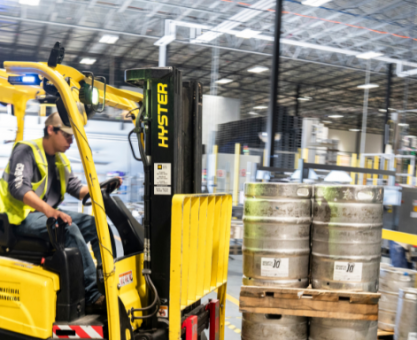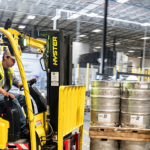Executive Summary
-
Explore the growing need for decarbonization in heavy industries due to environmental and regulatory pressures.
-
Understand collaborative strategies that industries can adopt to reduce carbon emissions effectively.
-
Learn about the benefits and challenges of these approaches, supported by real-world examples.
-
Discover expert tips and tools to aid in implementing decarbonization strategies.
Introduction
Decarbonization is no longer a choice but a necessity for heavy industries, which are significant contributors to global carbon emissions. As regulatory bodies tighten restrictions and as the demand for sustainable practices increases among consumers and investors, industries must pivot towards greener solutions. This article delves into the collaborative approaches that heavy industries can adopt to align with global decarbonization goals. We will explore the benefits, challenges, and step-by-step processes industries can employ, offering insights into real-world applications and expert recommendations.
Definitions / Context
Decarbonization refers to the reduction of carbon dioxide (CO2) emissions through various practices and technologies. In heavy industries like steel, cement, and chemicals, decarbonization involves adopting cleaner technologies and processes. Collaboration among industry stakeholders, governments, and technology providers is crucial to achieving significant carbon reductions.
Benefits / Pros
-
Cost Efficiency: Joint ventures and shared resources can reduce the costs associated with developing and implementing new technologies.
-
Innovation Acceleration: Collaborative efforts drive innovation by combining expertise and resources from different entities.
-
Regulatory Compliance: Working together helps industries meet stringent environmental regulations efficiently.
-
Risk Mitigation: Sharing risks associated with new technology adoption can make decarbonization projects more feasible.
Risks / Cons / Challenges
-
Coordination Complexity: Managing collaboration across different organizations can be complex and resource-intensive.
-
Intellectual Property Concerns: Sharing technology and data might lead to disputes over intellectual property rights.
-
Misaligned Objectives: Differing priorities among partners can hinder project progress.
-
Regulatory Hurdles: Navigating diverse regulatory environments can be challenging in multinational collaborations.
Step-by-Step Process
How to Implement Collaborative Decarbonization Strategies in Heavy Industries:
-
Identify Stakeholders: Collaborate with industry peers, governments, and tech providers.
-
Set Clear Goals: Define specific, measurable decarbonization targets.
-
Resource Pooling: Share financial and technical resources for technology development.
-
Pilot Projects: Start with pilot projects to test and refine technologies.
-
Monitor and Adapt: Continuously monitor progress and make necessary adjustments.
A consortium of leading steel manufacturers partnered with renewable energy firms to develop green hydrogen technology. By pooling resources, the consortium reduced R&D costs and accelerated the deployment of hydrogen-based steelmaking processes, cutting emissions by 30% within five years.
— The Steel Industry’s Green Initiative
Expert Tips / Strategic Insights
-
Engage Early: Involve stakeholders from the outset to ensure alignment and buy-in.
-
Leverage Technology: Utilize digital tools for real-time monitoring and data sharing.
-
Focus on Transparency: Maintain clear communication to build trust and facilitate cooperation.
-
Epiidosis Recommends: Regularly review and update decarbonization strategies to incorporate technological advances and regulatory changes.
Tools / Resources / Calculators
-
Carbon Footprint Calculators: Tools to estimate current emissions.
-
Collaborative Platforms: Online portals for partnering with other industry players.
-
Government Incentive Programs: Search for regional grants and subsidies supporting decarbonization.
Conclusion
Collaborative approaches to decarbonization in heavy industries present both opportunities and challenges. By pooling resources, sharing risks, and aligning goals, industries can significantly reduce their carbon footprint while meeting regulatory demands. As the push for sustainability grows, these partnerships will be crucial in driving innovation and achieving global climate targets.





















